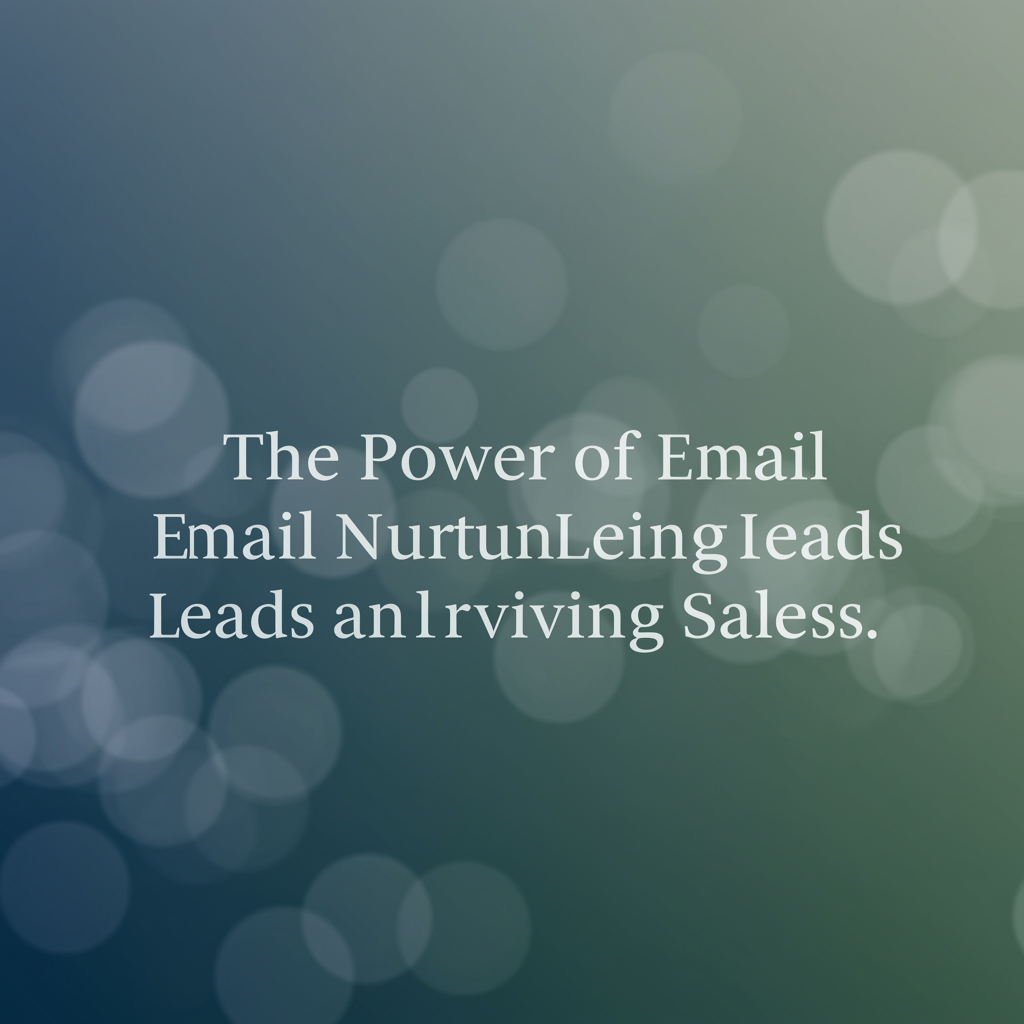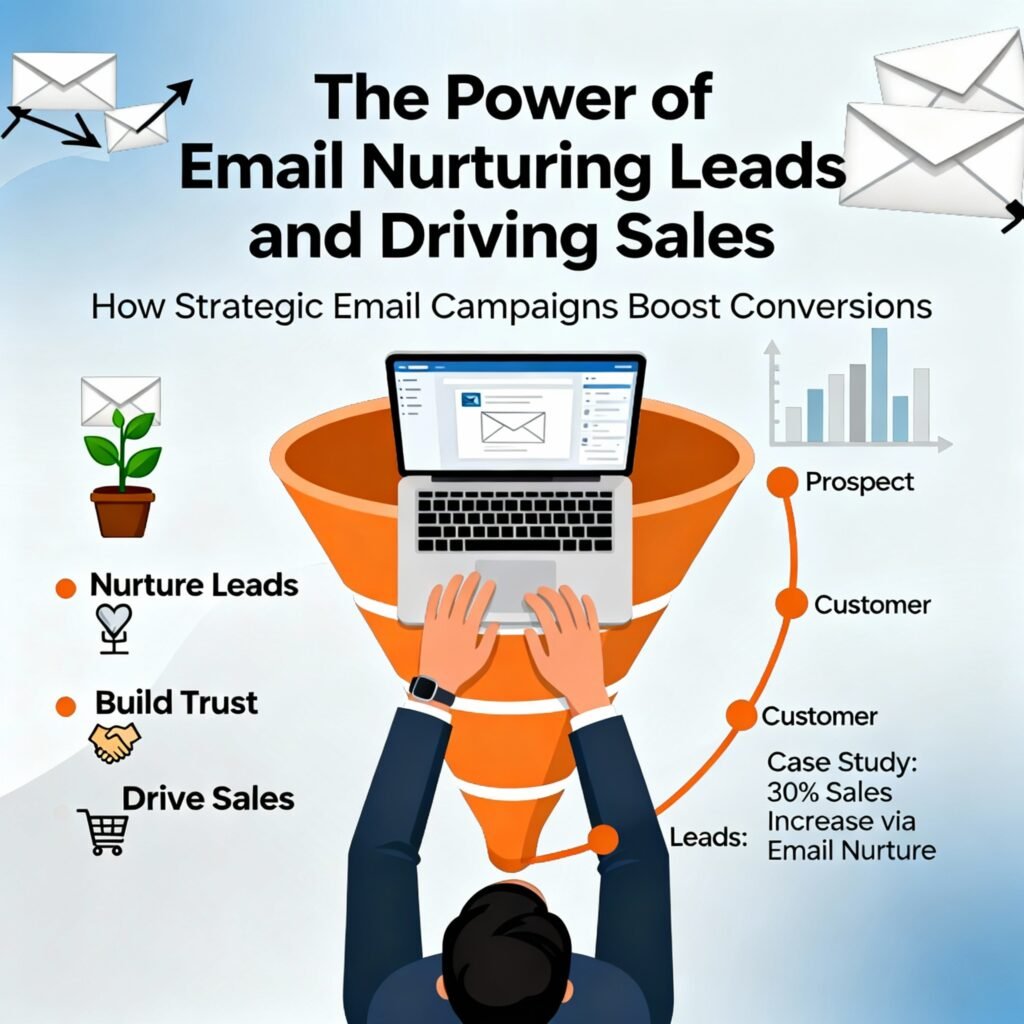
Email marketing remains one of the most effective ways to reach your audience directly and generate consistent sales. By building a targeted email list, crafting engaging sequences, and nurturing your subscribers, you can turn leads into loyal customers. In this post, we’ll explore proven strategies to maximize your email marketing efforts, increase conversions, and grow your business.
Table of Contents
- Why Email is Your Most Valuable Channel
- The Permission-Based Foundation: Building Your List Ethically
- Architecting the Journey: Welcome Sequences and Nurture Flows
- The Art of the Campaign: Driving Action and Revenue
- Crafting Emails That Get Opened, Read, and Clicked
- Measuring, Testing, and Optimizing for Success
- Conclusion: The Keystone of Your Marketing Architecture
1. Why Email is Your Most Valuable Channel
In the previous post, we explored how to build a community on social media—a powerful strategy for top-of-funnel awareness. But social platforms are “rented land.” Algorithms change, trends fade, and your reach is never guaranteed.
Email, however, is owned land. It is a direct, personal, and permission-based line of communication to your most engaged audience—the people who have actively raised their hands and said, “Yes, I want to hear from you.” While social media is for discovery, email is for conversion. It boasts an unparalleled ROI, consistently delivering an average of $36 for every $1 spent. It is where you transform casual followers into loyal customers and, ultimately, brand advocates.
2. The Permission-Based Foundation: Building Your List Ethically
You cannot nurture leads you don’t have. Building a high-quality email list is the single most important investment you can make in your business’s long-term health. This isn’t about buying lists; it’s about earning trust one subscriber at a time.
The Magnet: Creating an Irresistible Lead Magnet
A lead magnet is a free piece of value-packed content offered in exchange for an email address. Its purpose is to solve a specific, immediate problem for your target audience. The best lead magnets are:
- Highly Specific: Targets a niche pain point, not a broad topic.
- Quick to Consume: A checklist, a short guide, a cheat sheet, or a video tutorial.
- Actionable: Provides immediate value and a clear result.
Examples: A financial planner offers a “Retirement Readiness Checklist.” A software company provides a “5-Day Onboarding Video Course.” A bakery shares a “Secret Recipe eBook.”
The Placement: Strategic Opt-In Opportunities
Once you have a magnet, you need to promote it strategically across your digital properties:
- Website Pop-ups/Exit-Intents: A timely pop-up when a user is about to leave can capture interest. Offer the magnet relevant to the page they’re on.
- Dedicated Landing Page: Create a simple, persuasive page focused solely on converting visitors for your lead magnet. Drive paid traffic (e.g., from Google or social media) here.
- Content Upgrades: Within a high-performing blog post (from Post 3), offer a bonus resource that deepens the topic. For example, a blog post on “10 SEO Tips” could include an upgrade for a “Keyword Research Template.”
- Social Media Channels: Promote your lead magnet in your social bios and through dedicated posts to your community (from Post 4).
3. Architecting the Journey: Welcome Sequences and Nurture Flows
With subscribers coming in, the next step is automation. Automated email sequences do the nurturing work for you, 24/7.
The Critical Welcome Sequence
This is the first impression you make via email. A welcome series should accomplish three key goals:
- Deliver the Promised Value: The first email should immediately deliver the lead magnet with clear instructions.
- Introduce Your Brand’s Story and Values: The second email can share your “why,” building an emotional connection.
- Set Expectations and Provide a Soft Introduction: The third email can outline what they’ll receive from you (weekly tips, product updates) and include a very soft, helpful call-to-action, like reading a foundational blog post or following you on social media.
This sequence builds know, like, and trust before you ever try to sell anything.
The Educational Nurture Flow
Beyond the welcome series, you can set up a long-term “drip” nurture campaign for subscribers who aren’t ready to buy. This flow sends educational content at regular intervals (e.g., one email per week) that addresses common prospect questions and objections, positioning you as an authoritative and helpful resource. This keeps your brand top-of-mind until they are ready to enter the sales cycle.
4. The Art of the Campaign: Driving Action and Revenue
While sequences are automated, campaigns are broadcast emails sent to all or segments of your list to drive specific actions.
Promotional Campaigns That Convert
A single promotional email is rarely effective. A campaign is a series of 3-4 emails building up to an event (a launch, a sale, a webinar).
- Email 1: The Tease. Build anticipation without revealing everything. “Something big is coming next week…”
- Email 2: The Announcement. Reveal the offer with clear benefits and social proof. Explain the “why.”
- Email 3: The Urgency. Remind them of the offer as the deadline approaches. Highlight scarcity (limited time, limited quantity).
- Email 4: The Last Chance. A final reminder sent hours before the offer closes.
Re-engagement Campaigns: Winning Back Subscribers
A portion of your list will inevitably become inactive. A re-engagement campaign aims to win them back or clean your list.
- Send a simple, direct email asking if they still want to hear from you.
- Offer a compelling incentive to come back, like an exclusive discount.
- Be prepared to unsubscribe those who don’t engage. This improves your overall list health and sender reputation.
5. Crafting Emails That Get Opened, Read, and Clicked
Great strategy fails with poor execution. Email copywriting is a craft.
The Science of the Subject Line
The subject line’s only job is to get the email opened.
- Spark Curiosity: “You forgot something…” or “A quick question about…”
- State a Clear Benefit: “Your 20% discount is inside” or “5 tips to save time this week.”
- Use Personalization: Including the recipient’s name or location can boost open rates.
- Avoid Spam Triggers: Steer clear of all caps, excessive exclamation points!!!, and words like “Free,” “Guaranteed,” or “Act Now” (use them sparingly and strategically).
Writing Persuasive and Personal Body Copy
- Write Like a Human: Use a conversational tone. Write to one person, not a faceless crowd.
- Focus on the Reader’s Benefit: Don’t just list features; explain what those features do for the customer. “Our app saves you time” (benefit) vs. “Our app has a scheduling feature” (feature).
- Keep it Scannable: Use short paragraphs, bullet points, subheadings, and bold text to make your email easy to digest.
Designing for Clarity and Action
- Mobile-First: Over 50% of emails are opened on mobile. Use a single-column layout, large fonts, and tappable buttons.
- One Primary Call-to-Action (CTA): Each email should have one clear goal. Make your CTA button a contrasting color and use action-oriented text like “Get Your Guide” or “Shop the Sale.”
- Use Alt Text for Images: Always describe images for subscribers who have images turned off.
6. Measuring, Testing, and Optimizing for Success
Data is your guide. Track these key metrics:
- Open Rate: The percentage of recipients who opened your email. Indicates subject line effectiveness.
- Click-Through Rate (CTR): The percentage who clicked on a link. Indicates content and CTA effectiveness.
- Conversion Rate: The percentage who completed the desired action (purchase, sign-up). The ultimate metric.
- Unsubscribe Rate: The percentage who opted out. A sudden spike indicates a problem with content or list targeting.
Use A/B testing to continuously improve. Test one variable at a time: subject lines, send times, CTAs, or email content.

7. Conclusion: The Keystone of Your Marketing Architecture
Email marketing is not a standalone tactic; it is the keystone that holds your entire digital marketing architecture together. It is the system that captures the traffic from your SEO efforts (Post 2), repurposes the value from your content (Post 3), nurtures the community from your social channels (Post 4), and systematically guides subscribers toward a purchase.
You have now built a complete, holistic funnel: from attracting strangers, to engaging visitors, to converting subscribers. You have the tools to not just drive traffic, but to build a sustainable business rooted in genuine customer relationships.
This concludes our core series on foundational digital marketing mastery. You are now equipped to attract, engage, and convert your ideal audience with confidence and strategy.